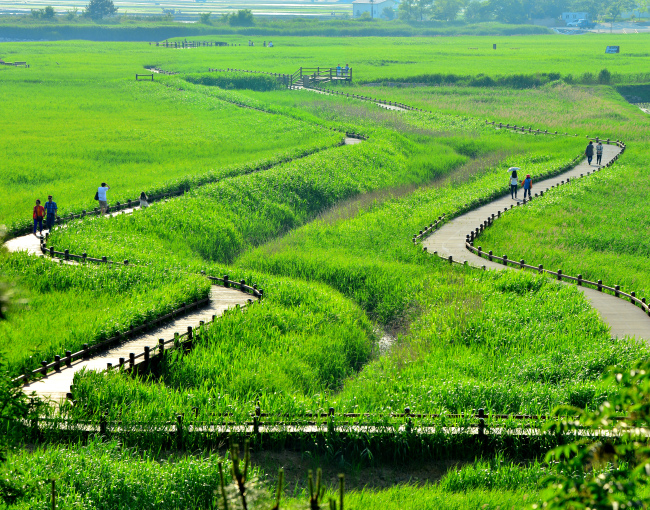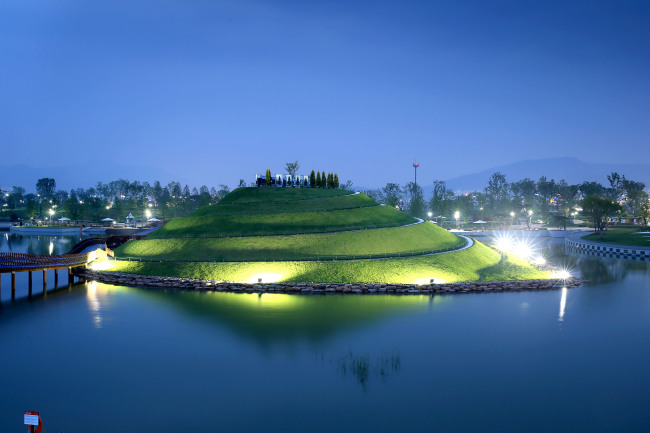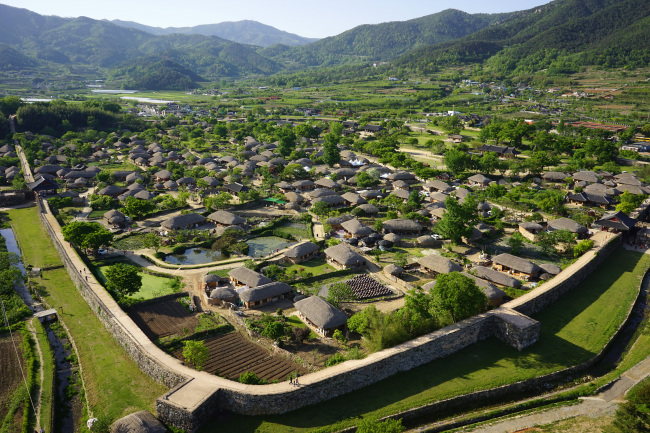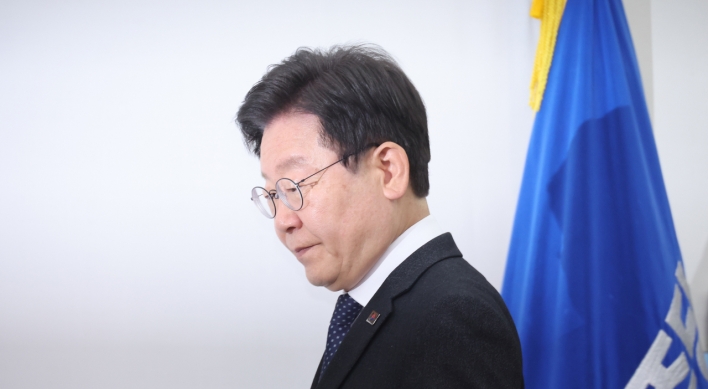Nestled in greenery, Suncheon offers look into the past
Korea’s ecological capital provides refuge from city life
By Korea HeraldPublished : Aug. 12, 2016 - 10:51
History still breathes in Sucheon.
Located in South Jeolla Province, the mid-size city of nearly 280,000 residents boasts well-preserved traces of the Joseon era, a period when it served as one of the crucial administrative towns of the kingdom. The city also houses the centuries-old Songgwangsa Temple, considered one of the three jewels of Korean Buddhism.
Today, the city’s environmental conservation efforts have cultivated biodiversity unparalleled to that found in urban areas: Suncheon boasts not only Korea’s first appointed National Garden, but also one of the five biggest coastal marshes in the world.
In order to convey Suncheon’s ecological and historical richness, about 150 teams of local artists and performers will be putting on exhibitions and events every Saturday from now until Oct. 30 throughout the city, including Culture Street, Suncheon Bay National Garden and Jorye Lake Park.
According to the Suncheon Mayor Cho Choon-hoon, the city is dedicated to fostering harmony among nature, culture and the arts so that residents can experience uninterrupted joy from their surroundings.
One with nature
Situated along nearly 40 kilometers of coastline, Suncheon Bay is one of the city’s most-photographed destinations.
Located in South Jeolla Province, the mid-size city of nearly 280,000 residents boasts well-preserved traces of the Joseon era, a period when it served as one of the crucial administrative towns of the kingdom. The city also houses the centuries-old Songgwangsa Temple, considered one of the three jewels of Korean Buddhism.
Today, the city’s environmental conservation efforts have cultivated biodiversity unparalleled to that found in urban areas: Suncheon boasts not only Korea’s first appointed National Garden, but also one of the five biggest coastal marshes in the world.
In order to convey Suncheon’s ecological and historical richness, about 150 teams of local artists and performers will be putting on exhibitions and events every Saturday from now until Oct. 30 throughout the city, including Culture Street, Suncheon Bay National Garden and Jorye Lake Park.
According to the Suncheon Mayor Cho Choon-hoon, the city is dedicated to fostering harmony among nature, culture and the arts so that residents can experience uninterrupted joy from their surroundings.
One with nature
Situated along nearly 40 kilometers of coastline, Suncheon Bay is one of the city’s most-photographed destinations.

Surrounded by expansive mudflats, the bay is home to approximately 30 varieties of marine organisms, including crabs, clams and mudskippers -- all sustained by the untouched ecosystem.
In spring and fall, sandpipers, little ringed plovers, black-faced spoonbills and other migratory birds make themselves at home -- until they journey elsewhere to clear room for hooded cranes, mallards and Saunders’ gulls for the winter.
For an unobstructed view of the area, visitors should drop by the Suncheon Bay Yongsan Observatory, where they can witness the changing colors of reed fields with the passing of each season.
To preserve the native flora and fauna that provide the region with its unique ecological network, the city organized the 2013 Suncheon Bay International Garden Expo, which paved the way to the founding of Suncheon Bay National Garden, Korea’s first state-run garden.
Opened in 2014, the garden was built in collaboration with corporations, local residents and designers, including critically acclaimed American landscape architect Charles Jencks. In addition to featuring over 300 species of native plants, including camellia, evergreen oak and sweet osmanthus, it showcases wild ecology found in over 10 different countries.

Additionally, to provide visitors with a more interactive experience, the garden offers walking tours every Monday and Thursday, various aquatic activities, gardening demonstrations, and more.
Travel back in time
Time stands still at Naganeupseong Folk Village located in the western corner of the city.
Dating back to Joseon era, the town is popular among history buffs for having one of the few remaining fortresses from the era that survived the Japanese colonial occupation. Designated as a national heritage, the area is a living and breathing museum that depicts some of the most authentic representations of the lifestyle of our forefathers.
Due to its pristine condition, Naganeupseong has been a popular filming location for period films and drama series, including “Masquerade” (2012), “Dong Yi” (2010), “Taegukgi: The Brotherhood of War” (2004) and more.
About 100 families still continue to live here, cultivating the historic land originally built to serve as an administrative core for the ruling dynasty. For visitors who wish to experience the village through the eyes of Korean ancestors, Naganeupseong residents personally offer accommodations in traditional thatched roof houses.
Eat and play
To offer both tourists and locals with a hands-on experience of Suncheon, the city will be hosting its first-ever Food and Art Festival in the fall.

Organized with the help of its residents, the three-day event will open with an act from “Bibap,” a nonverbal performance inspired by the culinary art behind Korean mixed rice dish bibimbap.
Additionally, cartoonist-turned-chef Kim Poong and culinary researcher Lee Hye-jung -- also known by her stage name “Bigmama” -- will be making special appearances to present live cook shows.
Designed to attract kids and adults alike, the festival is divided into five interactive zones -- food, art, kids, shopping and agriculture -- offering gastronomic and cultural experiences unique to the city.
The 2016 Food and Art Festival is scheduled to take place along Suncheon’s Culture Street and the old downtown area of Jungangno from Sept. 2-4.
By Park Dae-seong (parkds@heraldcorp.com) and Kim Yu-young (ivykim@heraldcorp.com)
-
Articles by Korea Herald




![[Herald Interview] 'Amid aging population, Korea to invite more young professionals from overseas'](http://res.heraldm.com/phpwas/restmb_idxmake.php?idx=644&simg=/content/image/2024/04/24/20240424050844_0.jpg&u=20240424200058)












![[KH Explains] Korean shipbuilding stocks rally: Real growth or bubble?](http://res.heraldm.com/phpwas/restmb_idxmake.php?idx=652&simg=/content/image/2024/04/25/20240425050656_0.jpg&u=)

